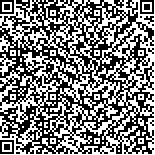李向哲,许攀攀,王盛,等.脑卒中后肩关节半脱位对偏瘫侧上肢周围神经电生理特征的影响[J].中华物理医学与康复杂志,2021,43(2):122-127
扫码阅读全文

|
| 脑卒中后肩关节半脱位对偏瘫侧上肢周围神经电生理特征的影响 |
|
| |
| DOI:10.3760/cma.j.issn.0254-1424.2021.02.004 |
| 中文关键词: 脑卒中 肩关节半脱位 神经传导 肌电图 上肢功能 |
| 英文关键词: Stroke Shoulder subluxation Nerve conduction Electromyography Upper limb function Sensory nerve action potentials Compound muscle action potentials |
| 基金项目:苏州市科学技术局民生科技项目(SYS201786) |
|
| 摘要点击次数: 6732 |
| 全文下载次数: 9675 |
| 中文摘要: |
| 目的 探讨脑卒中后肩关节半脱位对偏瘫侧上肢周围神经电生理参数的影响。 方法 纳入20例脑卒中伴肩关节半脱位的患者,分别对患者双上肢肩胛上神经、腋神经、肌皮神经、桡神经、正中神经、尺神经的运动神经传导及桡神经、正中神经、尺神经的感觉神经传导进行评估,并对偏瘫上肢冈上肌、三角肌、肱二头肌、伸指总肌、拇短展肌和小指展肌进行静息状态下针极肌电图检测;采用Brunnstrom分期对患者的上肢和手功能进行评估,并对患侧神经肌肉复合动作电位(CMAP)波幅的变化率与患者病程、年龄及上肢Brunnstrom分期进行相关性分析。 结果 与健侧相比,脑卒中后肩关节半脱位侧的肩胛上神经、腋神经、肌皮神经、桡神经、正中神经、尺神经CMAP波幅均显著降低(P<0.01),肩胛上神经和腋神经的潜伏期延长(P<0.05),肌皮神经、桡神经、正中神经和尺神经潜伏期双侧差异无统计学意义(P>0.05)。桡神经、正中神经和尺神经运动传导速度双侧无差异(P>0.05)。偏瘫侧腋神经、肩胛上神经、肌皮神经CMAP波幅变化率明显高于桡神经、正中神经和尺神经(P<0.05)。偏瘫侧桡神经、正中神经和尺神经的感觉神经动作电位(SNAP)较健侧降低(P<0.01),感觉传导速度双侧差异无统计学意义(P>0.05)。偏瘫侧SNAP波幅变化率由高到低依次为正中神经、桡神经和尺神经,但两两对比差异均无统计学意义(P>0.05),感觉神经传导速度变化率两两对比差异亦无统计学意义(P>0.05)。肩关节半脱位后上肢所检肌肉均存在不同程度的自发电位,偏瘫上肢近端出现率高于远端肢体,其中冈上肌自发电位出现率为61.54%,三角肌为84.62%,肱二头肌为69.23%,伸指总肌和拇短展肌为46.15%,小指展肌为30.77%。偏瘫侧CMAP变化率与患者病程、年龄及上肢Brunnstrom分期之间均无明显相关性(P>0.05)。 结论 脑卒中后肩关节半脱位可导致支配肩和上臂的周围神经损害程度大于支配前臂和手的神经,可能影响患者上肢功能的恢复。 |
| 英文摘要: |
| Objective To explore the effect of shoulder subluxation on the peripheral nerves in the hemiplegic upper limbs of stroke survivors. Methods Twenty stroke survivors with shoulder subluxation were enrolled. Conduction in their suprascapular, axillary, musculocutaneous, radial, median and ulnar nerves was monitored and needle electromyography was used to monitor activity in the supraspinatus, deltoid, biceps brachii, extensor digitorum, abductor pollicis brevis and abductor digiti minimi muscles of their affected upper limbs at rest. Upper limb and hand function were assessed using the Brunnstrom scale. The rate of change in the amplitude of the compound muscle action potentials (CMAPs) was correlated with the patient′s disease duration, age, and upper limb and hand Brunnstrom stages. Results Compared with the healthy side, a significant decrease was observed in the CMAP amplitudes of the suprascapular, axillary, musculocutaneous, radial, median and ulnar nerves of the hemiplegic arm, and the latency of the suprascapular and axillary nerves was significantly prolonged. There was no inter-arm difference in the conduction velocity of the musculocutaneous, radial, median and ulnar nerves. The rates of change in the CMAP amplitudes of the suprascapular, axillary and musculocutaneous nerves were significantly higher than those of the radial, median and ulnar nerves. The sensory nerve action potential (SNAP) amplitudes of the median, ulnar and radial nerves on the hemiplegic side were significantly lower than on the healthy side, but there was no significant difference in the sensory conduction velocity between the two sides. On the hemiplegic side, the median nerve had the highest rate of change rate in the SNAP amplitude, followed by the radial and ulnar nerves, but there was no significant difference among them. Nor was there any significant difference in the rate of change in sensory nerve conduction velocity. The muscles of the affected upper limbs had higher potentials in the proximal than that in the distal nerves after shoulder subluxation. The rate of change in the CMAPs was not significantly correlated with a patient′s disease duration, age, or upper limb or hand Brunnstrom stage on the hemiplegic side. Conclusions Shoulder subluxation after a stroke can cause greater damage to the peripheral nerves in the shoulder and upper arm than to those in the forearm and hand, possibly affecting the recovery of upper limb function. |
|
查看全文
查看/发表评论 下载PDF阅读器 |
| 关闭 |
|
|
|